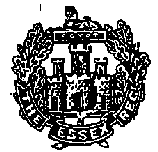44th Regiment of Foot
Introduction
The information on this page has been extracted from a number of sources, including Thomas Carter's 'Historical Record of the Forty-Fourth or the East Essex Regiment of Foot' (1864), John W. Burrows' 'The Essex Regiment : Short History and Chronology' (undated, but after World War One), 'The British Army of 1914' and various War Office documents such as Muster Rolls and pension records.
Brief History
This regiment was formed in 1741 as Long's Regiment, then in 1751 it was numbered as the 44th Foot. In 1782 it was designated the 44th, or East Essex, Regiment then in 1881 it was renamed simply the Essex Regiment.
The regiment has a distinguished history, having fought at Waterloo in 1815 and throughout the Crimean War 1854-1856, as well as numerous other famous and not-so-famous battles. However, as this website is primarily concerned with family history in India, only the India-related history will be recounted.
In consequence of the Indian Mutiny, reinforcements had to be sent to all the Presidencies at short notice. The 44th had not long returned to England from the Crimea when it was selected as one of the regiments to reinforce India. On 26th August, 1857 the regiment embarked for Madras, arriving on 12th January, 1858. The women and children were left at home. During the years 1858 and 1859, the regiment remained at Fort St George, Madras, from whence it proceeded on active service.
War with China had broken out, owing to the Emperor refusing to ratify the treaty which had been signed two years previously by his ministers at Tien-Tsin. In this campaign, as in the Crimea, the French and British forces acted together. The 44th embarked for China on 31st January, 1860. The women and children of the regiment arrived at Madras, from England, after the first detachment had departed, and were again left behind.
After landing at Kowloon, on the mainland opposite Hong Kong, the 44th proceeded on 15th May to the north of China, leaving the 'weakly men' behind at Hong Kong. On 16th June the regiment arrived at Talienwhan Bay, near the entrance of the Gulf of Pecheli, where the troops were employed in digging wells. The expedition re-embarked on 24th July and sailed for the Peiho River, and moved to the Pehtang River on 30th July.
The 44th took part in the capture of the Sinho entrenchments and the storm of the Taku forts, in which two Victoria Crosses were won. The attacking party of the 44th and 67th Regiments swam the ditch and tried to force an entrance by the gate, but without success. Some of them then climbed up the wall to an embrasure and also at a point to the right of the gate. Lieutenant Lenon of the 67th stuck his sword into the wall to enable Lieutenant Rogers of the 44th , who had been wounded, to enter the fort, the first British officer to do so. For this service, 'Taku Forts' was inscribed on the Colours.
The regiment returned to Fort St George, Madras. It was in Kamptee in Central India at least from 1876 to 1878, and then moved to Thyetmo in Burma in the first half of 1878. The Regiment was still at Thyetmo in 1881, when it was designated the First Battalion, The Essex Regiment, under which title it served in the South African War (1899-1902).
